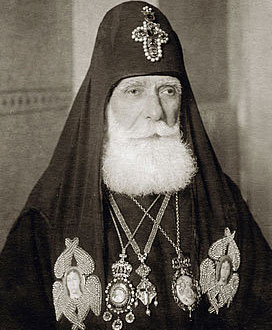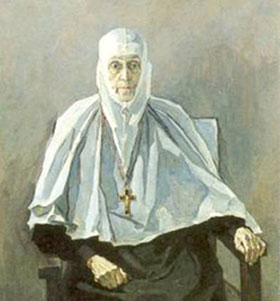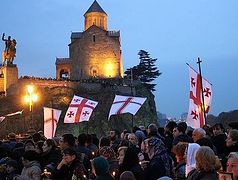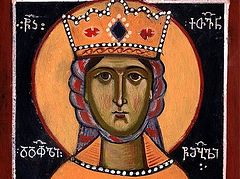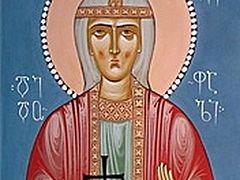Source: Blagovest
December 23, 2016
The Holy Synod of the Georgian Orthodox Church, at a December 21 meeting, has numbered among the ranks of the saints two kings—Bargrat III and Solomon I, two abbesses—Nina (Amilakhvari) and Tamar (Mardzhanishvili), and Catholics-Patriarch Kallistrat (Tsintsadze) who lead the Church in the difficult years of 30s-50s of the previous century, reports Interpressnews.
Bagrat III (960-1014) was glorified as a king-unifier. He managed to unite under his authority almost all of Georgia, except Tbilisi which remained under the authority of the Arabs.
Solomon I (1753-1784) was the king of Imereti (western Georgia) in the second half of the eighteenth century. He successfully battled the Turks, including in an alliance with the Russians, writes Wikipedia.
Catholicos-Patriarch Kallistrat was born in 1866 into a priest’s family in an Imereti village. According to Wikipedia, he graduated from Tiflis Seminary and the Kievan Spiritual Academy. He was ordained as a priest in 1892. In 1925 he became a bishop, and in 1932 was chosen Catholicos. Coming into control of the Church, he strove to halt the process of closure, destruction and looting of churches and monasteries, while maintaining a loyal attitude towards the Soviet authorities.
Abbess Nina (Nino) Amilakhvari lived in the second half of the nineteenth century. She labored to revive monastic life in the Monastery of St. Nina in Samtavro (Mtskheta).
Schema-igumena Tamar (Tamara Alexandrovna Mardzhanishvili, 1869-1936) accepted monasticism in the Bodve Monastery, where the holy Equal-to-the-Apostles Nina ended her life’s journey. In 1902 she became the abbess of the monastery. In 1905, after an attempt on her life during the revolution, she was transferred to Moscow where she guided the Pokrov community, writes the site of the Church of the Annunciation in Taininskoe. Later she founded the Seraphimo-Znamenskii Skete near Moscow. After the Bolsheviks closed the skete she lived in suburban Perkhushkove, and in 1931 was arrested and exiled to Siberia. Three years later Mother Tamar, already terminally ill, was allowed to return to the Moscow area, where she reposed in 1936.

